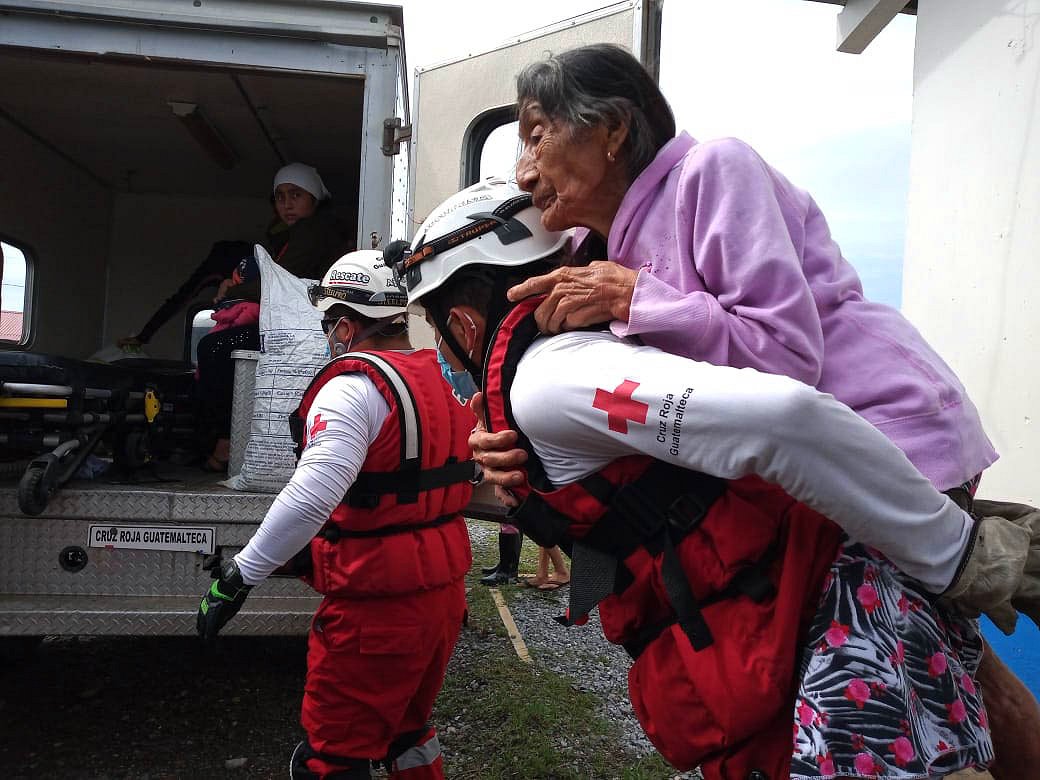
WMO expands guidance on impact-based forecasting as part of inter-disciplinary ‘paradigm shift’

by the Climate Centre
Arguing that forecasts of what the weather will do – impact-based forecasting – as well as what it will be are vital to address humanitarian impacts, the World Meteorological Organization today released new operational guidance, adding a second part, on practice, to its 2015 reference text.
The guidance also embraces anticipatory action and was presented on the last of three days of the 9th Global Dialogue Platform on Anticipatory Humanitarian Action by Professor Celeste Saulo, WMO Vice-President and Director of the Argentine National Meteorological Service.
As the UN’s authoritative voice on weather, climate and water, the WMO believes there has been “a paradigm shift towards impact-based forecasting, driven by the international meteorological and humanitarian community and facilitated by leaps in science and technology,” a press release issued by its secretariat in Geneva said.
“Over the last 50 years there has been a fivefold increase in recorded weather, climate and water-related hazards, with long-lasting socio-economic consequences,” said Cyrille Honoré, WMO Director of Disaster Risk Reduction and Public Services.
“The number of deaths has decreased thanks to increased availability of accurate and timely warnings. But it is still unnecessarily high as a result of lack of understanding of potential impacts. This needs to change.”
The new Guidelines on Multi-hazard Impact-based Forecast and Warning Services, Part II: Putting Multi-hazard IBFWS into Practice provide practical information and case studies on how to move from warnings issued at national level to forecasts of “multiple cascading hazards” such as a cyclone that triggers flooding, sea surges, wind damage and other infrastructural and social impacts.
‘Deaths are still unnecessarily high,
as a result of lack of understanding of
potential impacts. This needs to change’
Impact-based forecasting was first identified in 2016 as a key element of anticipatory action, and the Climate Centre has worked closely since with the WMO, the UK Met Office and other national met services and researchers to hone methodology and include humanitarian perspectives.
The Future of Forecasts: Impact-Based Forecasting for Early Action was issued by the IFRC and the UK Met Office in September 2020, and was among the sources for the new WMO guide.
Climate Centre Director Maarten van Aalst said today: “Impact-based forecasting plays a critical role to enable anticipatory action, transforming complex scientific information into actionable insights that enable humanitarian interventions, such as shelter strengthening by farmers in the Philippines before a typhoon makes landfall, or distributing alpaca veterinary kits to protect…families in the Andean region of Peru against coldwaves.”
Symposium
The new guidelines benefit from research into exposure and vulnerability and incorporate extensive input from both service providers and users, according to the WMO.
They include recommendations from a symposium hosted by the UK Met Office in 2019 which grouped more than 20 national agencies, research institutes, and international organizations including the IFRC, the World Bank, the WFP, and Climate Risk and Early Warning Systems.
Will Lang, Met Office Head of Civil Contingencies, said that event had “provided an opportunity to share experience and expertise of impact-based forecasting and anticipatory action. The new guidelines will help organizations around the world to develop services which can help protect lives and livelihoods.”
Guatemalan Red Cross volunteers evacuate vulnerable elderly people facing the ravages of Hurricanes Eta and Iota – tropical cyclones being one of the hazards whose impacts may now be better predicted as a result of new guidelines issued by the World Meteorological Organization. Agencies in Guatemala cooperate to assess climate-related risk and improve monitoring – one case study featured by the WMO. (Photo: Guatemala Red Cross via IFRC)